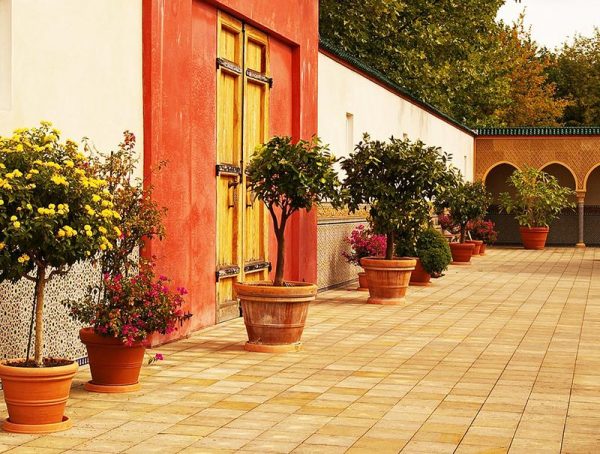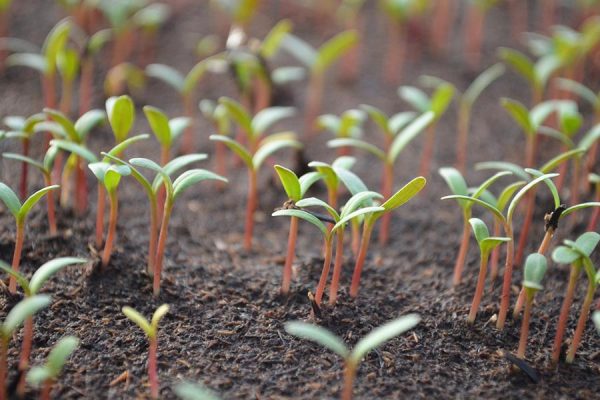Article: How to plant a tree or shrub

How to plant a tree or shrub
Autumn is a great time to plant trees or shrubs. The ground shouldn’t be too wet, too dry or too cold (but just right, like Goldilock’s porridge!). It’s a time when most foliage is starting to die back so you probably have better access to the spot you want to plant in. Autumn planting also gives them plenty of time to establish themselves before next spring’s growing season kicks in, giving them the best possible start.
Whether you want to plant a rose, a productive fruit tree or an evergreen groundcover conifer, now is a great time to do it. Here’s how.
Choosing the right tree or shrub
There is a lot of choice when it comes to picking the most suitable plant for your garden and everyone’s personal preferences are different, so here is our list of things to consider to help you get it right:
- What is your soil like? Sandy, acidic, boggy? Pick a plant that will cope in those conditions.
- How much sun will the plant get? Not all trees and shrubs need full sun so pick to suit your site.
- Do you want seasonal interest? Leaf colour, flower colour, berries/fruits and scent are all options so think about what your plant needs to bring to your garden in each season.
- How much room do you have? Think about how much your tree or shrub will grow and whether it will block light from plants around it (or from you!)
- Finally, how much maintenance are you prepared to do? If you’re hands on, pick something that is faster growing that you’d be happy pruning. If not, perhaps choose something which grows more slowly so it will require less attention from you.
(Our previous article on ‘Trees for all gardens’ also has some things to think about too.)
Once you’ve thought about your answers to these questions, you’ll be in a good position to read the plant labels or pick the brains of our Plant Experts in Centre.
Before you plant
Ideally, you will want to plant your new tree or shrub as soon as you can after you get it home. If you can’t plant it immediately, pop it in a protected spot outside and give it a good watering. Keep an eye on it until you do get the chance to plant it.
When you are ready to plant, it’s a good idea to dig over the entire area around your chosen site to about one garden fork depth. Remove all weeds and their roots and, if you feel you need to, dig through a general, slow-release fertiliser or some homemade compost to give your soil a boost. If you can’t dig the entire area, perhaps because you have other plants already there, do what you can with a hand fork to avoid disturbing the roots of your established plants.

Digging the hole
Dig as large a hole as you can! An ideal minimum is at least the depth of the pot your plant has come in and half as wide again. The larger you can make the hole, the more opportunity you are giving your plant’s roots to grow into non-compacted soil. Most plants prefer to be planted at the same depth as the soil level in their pot but it’s worth taking the opportunity to dig a bit deeper and then make up to the right height with fresh compost.
There is also an argument for not digging a round hole. Research suggests that, sometimes, when roots reach a compacted area of soil, they circle on round, resulting in spiralling roots which don’t reach out into the wider soil at all. Holes with corners won’t give them the choice and they have to grow on through, helping ensure your plant is anchored in the soil more securely.
Planting and aftercare
When you’re ready to plant, knock the pot off the root ball and sit it in your hole. Check the level and add or remove soil to get the plant to the right height. Also, check the aspect of the plant: stand back and look at it from a distance to check it’s vertical and looks balanced in your chosen spot.
Once you’re happy the plant is sited as you want it, back fill around it with soil or compost. Firm it in with your heel, leaving a shallow furrow around it to help collect water. Then water it really well, even if it’s raining. Watering at this stage helps to ensure good root contact with the soil, washing small particles into any air gaps, so isn’t just about moisture.
Most trees will benefit from staking but it’s particularly important for large trees. Depending on your location, you may want to think about rabbit-guards to protect the main stem from hungry visitors until it has established.
Newly planted trees or shrubs will need regular watering for at least the first year to help them thrive. Use your judgement about whether it has rained enough and, if in any doubt, water! You shouldn’t need to give any additional feed, particularly if you enriched the soil when you planted, but a nutrient rich top dressing (such as homemade compost) early each spring won’t go amiss.

Planting in pots
Many trees or shrubs can cope with being planted in large pots if you choose. They can certainly make statement features in a garden and they can be moved around more easily (we’d recommend wheeled pot movers). If you’re going to plant in a pot, think carefully about your choice of plant. Pots tend to dry out more quickly than the soil does, so you may want a more drought-tolerant plant. A fast-growing plant may also outgrow its pot more rapidly than you anticipated so that could be a consideration. Again, chat with our Plant Experts if you would like some further advice.
For further information on choosing, planting and caring for trees or shrubs, browse our selection of previous articles here:
How to prune trained fruit trees
How to winter prune apple or pear trees
Trees for all gardens!
Our guide to roses
Caring for conifers


Leave a comment
This site is protected by reCAPTCHA and the Google Privacy Policy and Terms of Service apply.